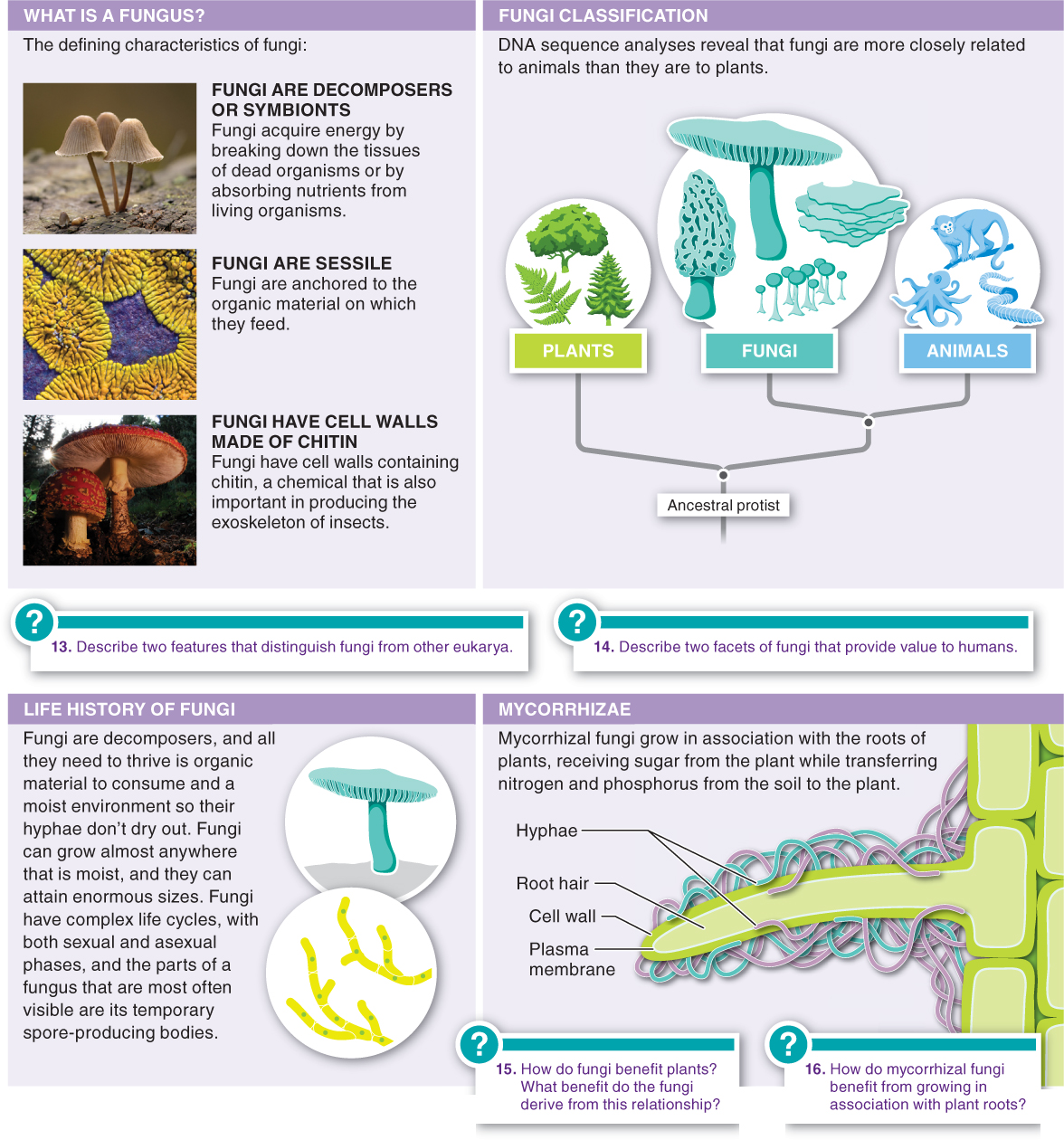12.13–12.13
12.13–Fungi and plants are partners but not close relatives.
Most fungi are multicellular, sessile decomposers.

Q
Dispersal of fungal spores is typically done by:
- a) movement of cilia.
- b) insects.
- c) hummingbirds.
- d) wind.
- e) movement of flagella.

Just before the first diploid cell is formed in fungal life cycles, the cell is said to be:
- a) haploid.
- b) a gamete.
- c) a mycelium.
- d) a hypha.
- e) dikaryotic.

You are taking a hike down a forest trail and see the familiar sight of a mushroom on the ground. This visible portion of a fungal body is the structure also referred to as a:
- a) hypha.
- b) fruiting body.
- c) thallus.
- d) spore sac.
- e) mycelium.

In most cases, the relationship between roots and fungi in mycorrhizae can best be described as:
- a) mycelium.
- b) competition.
- c) trickery.
- d) symbiosis.
- e) parasitism.
